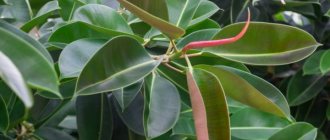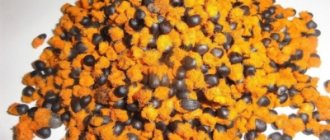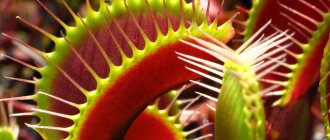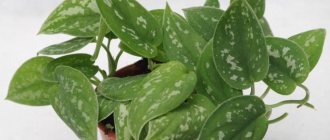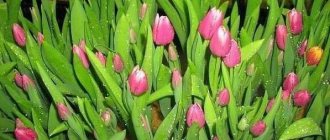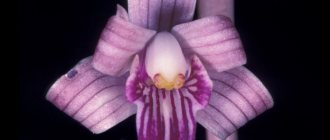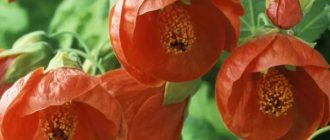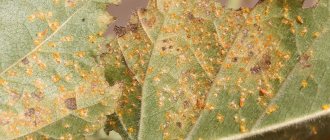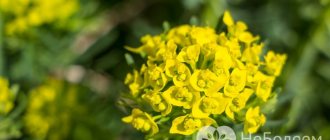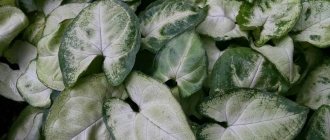Guzmania is a popular indoor flower these days. It belongs to the Bromeliad family. In its natural form, it is distributed in Central America and Brazil. It grows in tropical forests. Depending on the variety, guzmania may have a slightly different appearance. But the plant species do not differ radically from each other. They grow in the form of a rosette, the leaves are oblong, pointed upward.
Depending on the species, the leaves can reach from thirty to sixty centimeters in length. In nature, these plants are epiphytes (that is, they are attached not to the ground, but to other plants), so they have aerial roots, thanks to which they receive from the air most of the moisture necessary for photosynthesis. By the way, epiphytes include everyone’s favorite orchids and many representatives of Bromeliads, which include guzmania. How to care for such crops? This is what we will look at today.
Varieties and their differences
Guzmania can have flowers of different colors and sizes, mostly they are bright and large, with pointed oblong petals. The most common species is Guzmania red. It is distinguished by its bright red leaves. Her flowers are the same color. We will tell you how to care for red guzmania below. Growing this flower does not require too much effort.
The next variety is Guzmania minor Rondo. “How to care for her?” - this question was probably asked by any person who grows indoor flowers. Minor rondo is the most common representative of this genus among indoor plant lovers. These beauties can have white or red flowers. The leaves that surround the flower are also brightly colored - usually orange or red. There are also varieties with striped leaves, but they are not as common.
Another variety is guzmania mix. Many people also wonder how to care for it. Let's look at the basic rules for caring for plants of the Guzmania genus.
Let's get acquainted - the guzmania flower and its photo
The more accurate name used by botanists is Guzmania, which belongs to the large family of bromeliads. Another famous relative is the pineapple. Let's get to know each other better - Bromeliaceae presents us with the indoor flower guzmania, striking the imagination with its beauty and grace. Look at his photos illustrating the plant’s rich capabilities in solving decorative problems:
In the wild, the culture is now found in great diversity on both American continents. Refers to epiphytes (parasites) that grow in symbiosis with other plants. Ordinary soil for growing at home is not suitable, since the root system can only develop in the presence of a fungus on the tree bark. Most of the moisture in the leaf mass comes from the surrounding air with the help of massive aerial roots. In indoor conditions, Guzmania should be regularly given a warm shower and the air around it should be sprayed daily with a spray bottle.
Scientists have recorded more than a hundred species of this crop; no more than 10 of them are used at home. Guzmania mix, reed and rondo minor are most adapted to closed ground conditions. They are not whimsical and develop successfully in any conditions.
Descriptions can be found in many botanists. These are long dense leaves with pointed edges, absolutely smooth and very dense. They are collected in a bunch, from the center of which a peduncle appears over time. The height of an adult plant is 40-50 cm. During flowering, a single bud of burgundy or orange, yellow or white blooms. Specimens with brown and pink buds are less common. This is truly exotic.
Transfer
What to do if guzmania has grown, how to care for a plant that is cramped in its pot? The plant requires very careful replanting, taking into account some nuances. And we’ll start talking about its cultivation with a description of this procedure, since you will need to perform it every year or every two years, depending on the type.
It is undesirable and makes no sense to replant an adult guzmania itself, but with young shoots that remain after the mother plant has dried out, this procedure must be carried out. You can also separate the root shoots during the life of the old plant. Then you need to do this before it blooms. In this way, you can not only propagate the plant, but also extend the life of the mother bush. So, let's start transplanting the young guzmania. To do this, you need to immediately prepare the pot.
Features of growing and reproducing children
Even exotic epiphytes can be successfully grown if you follow all the rules. The features of growing Guzmania have already been partially described above, but it is worth talking about how reproduction by children is carried out. A botanical sign is the death of the mother plant after the “baby” has fully matured. At its core, this is a new bush that begins to grow nearby during the formation of the peduncle. As soon as flowering ends, the main plant begins to dry out, giving way to a new one. The gardener can only remove the dried leaves. In this state, guzmania can be grown at home for several years. If 2 babies have formed, one needs to be transplanted into a separate pot.
For this, a special soil is prepared, 2/3 consisting of tree bark, sawdust and small pebbles. You can also add sphagnum, construction or river sand, broken brick. The more structured and light the soil is, the faster the plant will develop. In some cases, it is better to purchase special soil for bromeliads in the store.
When planting or replanting, the roots should be carefully placed in a shallow pot and carefully sprinkled with soil. From above, the soil is slightly compacted and watered abundantly. After this procedure, you should place the plant in the shade for 10 days and spray the foliage with water 4-5 times a day.
To obtain a flower stalk, it is important to maintain an optimal balance of organic and mineral fertilizers in the soil. Feeding begins in the first ten days of March and continues until the end of September. Recommended schedule: 1 time every 2 weeks with an organic solution and 1 time every 2 weeks with a mineral complex. Foliar feeding gives the best results. To do this, the prepared warm solution is poured directly into the rosette of leaves.
Do not be discouraged if flowering does not occur for a long time. Bromeliads usually bloom 4-5 years after planting. After a bright climax, the plant dries out. Repeated flowering is not observed. To speed up flowering, many gardeners use a simple and effective technique. An apple cut into quarters is placed in a plastic bag (directly on the soil next to the plant) and the guzmania is covered with this bag. A month later, the plant blooms due to the influence of ethylene released by the apple.
Drainage and soil
A drainage layer should be placed at the bottom. The lower the pot, the thinner this layer should be. But it should take up quite a lot of space - one third of the height of the vessel. It would be best to use expanded clay or polystyrene as drainage. You also need to make a layer of coal. It prevents the occurrence of putrefactive processes in wet soil. This will only make your Guzmania healthier. How to care for a plant that came to us from the hot tropics? The crop loves abundant watering, so the use of coal as drainage is necessary for its full growth. This plant also requires special soil.
This can be either soil intended for bromeliads or one made for orchids, since they have identical soil requirements. You can also prepare soil suitable for guzmania yourself, but this is quite difficult. As additives, this kind of soil includes components that are difficult to find separately, for example, sphagnum. If you add it to the soil, as well as peat, pieces of bark and loose leaf soil, you will get land in which Guzmania will feel comfortable.
Transplantation process
Having prepared suitable soil, pour it into the pot a few centimeters, making a slight elevation in the middle. Carefully place the guzmania on it, straighten the roots, being careful not to damage them in any way. This is quite difficult, because the root system of this plant is quite weak and fragile, so you need to try to do everything as carefully as possible. After adding soil to the level of the plant’s neck, tap the pot on the windowsill (or other surface on which it is located) a couple of times. This will allow the soil to compact slightly so you can add more. But under no circumstances trample down the soil in the pot with your hands, as guzmania loves loose soil that contains air. In order for the flower to take root well in a new place, place it in a warm place with good (but not too strong) lighting and without drafts.
Watering rules
The guzmania flower, which we continue to tell you how to care for, loves regular and good watering. You can even say that it prefers high humidity of both soil and air. This is especially true for a species such as guzmania minor, you will know how to care for it after reading this article. You need to water it with warm water, but, naturally, not hot, its temperature should be slightly above room temperature. In addition, it should not be too hard. In order to get rid of excessive hardness, you need to boil the water and leave it to brew. In addition, it is necessary to regularly spray the leaves of the plant and the air around it in general to increase humidity. This is necessary because guzmania has an essentially underdeveloped root system, and it absorbs half of the moisture necessary for photosynthesis from the air with the help of leaves or aerial roots. In addition, when watering, you need to take into account the fact that water is not poured into the ground around the flower, but into the outer layer of the rosette (not into the inner layer, as this can lead to rotting of the root system).
Botanical description
Like all bromeliads, guzmania leaves overlap each other at the base, forming a cup for water, which the plant accumulates for itself, but is also used by other forest inhabitants. Typically, guzmania leaves are monochromatic, but there are species with longitudinally or transversely striped leaves. The leaves, reaching a length of 40 to 70 cm, form a rosette with an average diameter of half a meter, although there are both more compact species and smaller ones. The situation is the same with the peduncle: different species have different lengths.
- Orchid transplantation: when to replant, reasons for replanting
The guzmania plant blooms in March or September and blooms for several months. The flowers are unattractive and inconspicuous, but the bright, varnished red, yellow, white or orange bracts 4-5 cm long, forming an unusual inflorescence, are extremely impressive. An adult plant reaches 75 cm in height and 60 cm in width, but homemade guzmania rarely grows above 40 cm. The plant dies within six months after flowering.
Diseases and pests
In general, it is believed that guzmania is a very resistant plant to various diseases.
However, it can also be affected by parasites of various natures (be it insects or some kind of fungus). This happens mainly due to improper care. So, what pests can this beautiful plant fall victim to? First of all, we can say about scale insects, spider mites and root scale insects. It is these parasites that most often attack guzmania. The fact that the plant is infested with pests is indicated by spots on the leaves and stem, mostly brown or black (it all depends on the specific type of parasite). They can only be controlled with the help of chemicals - insecticides. But diseases not associated with parasites are most often caused by an imbalance of moisture in the room where the flower is located. As already mentioned, he loves an increased level of moisture around him. And so, if the air or soil is dry, the leaves of the guzmania may begin to turn brown and gradually fall off. There is only one way to combat this - regularly spray the plant and water more frequently.
Fertilizer
You can also feed this indoor flower if you want to speed up its growth or speed up flowering. In principle, this is not necessary. But if you see that the plant is not blooming (flowers usually appear in November), then know that it is lacking minerals. To correct this kind of situation, you can use complex fertilizers that are intended for bromeliads or orchids. They need to be diluted with warm, soft water and watered with it as usual. This can be done no more often than once every two to three weeks.
Planting and caring for guzmania
- Flowering: Each rosette blooms once and dies after flowering.
- Lighting: bright diffused light.
- Temperature: lower threshold – 13 ˚C, upper threshold – 27 ˚C. Optimal regime: during the period of growth and development – 25 ˚C, during the flowering period – 20 ˚C.
- Watering: as soon as signs of dryness appear on the surface of the substrate.
- Humidity: high. Requires daily spraying with settled warm water.
- Feeding: once a month from March to September with fertilizer for bromeliads, diluted twice as strong as indicated in the instructions.
- Dormant period: after flowering.
- Transplantation: do not replant.
- Reproduction: seed (very rare) and vegetative (lateral shoots).
- Pests: scale insects, mealybugs, spider mites.
- Diseases: gray rot, root rot.
Read more about growing Guzmania below.
Guzmania (lat. Guzmania) , or, as correctly, guzmania , is an evergreen herbaceous epiphytic and terrestrial plant of the Bromeliad family. The genus contains about 130 species, growing in Venezuela, Brazil, Central America, as well as in the West Indies and South Florida on open mountain slopes at an altitude of about 2400 m above sea level. This genus was first described in 1802, and the name Guzmania was given in honor of the Spanish botanist, zoologist and pharmacist Anastasio Guzman, who studied South America. Since then, many Guzmania species have been cultivated for indoor floriculture. Indoor guzmania is attractive with its unusual rosette of long leaves and an unusual cone-like inflorescence, but the most important advantage is the long flowering of guzmania.
